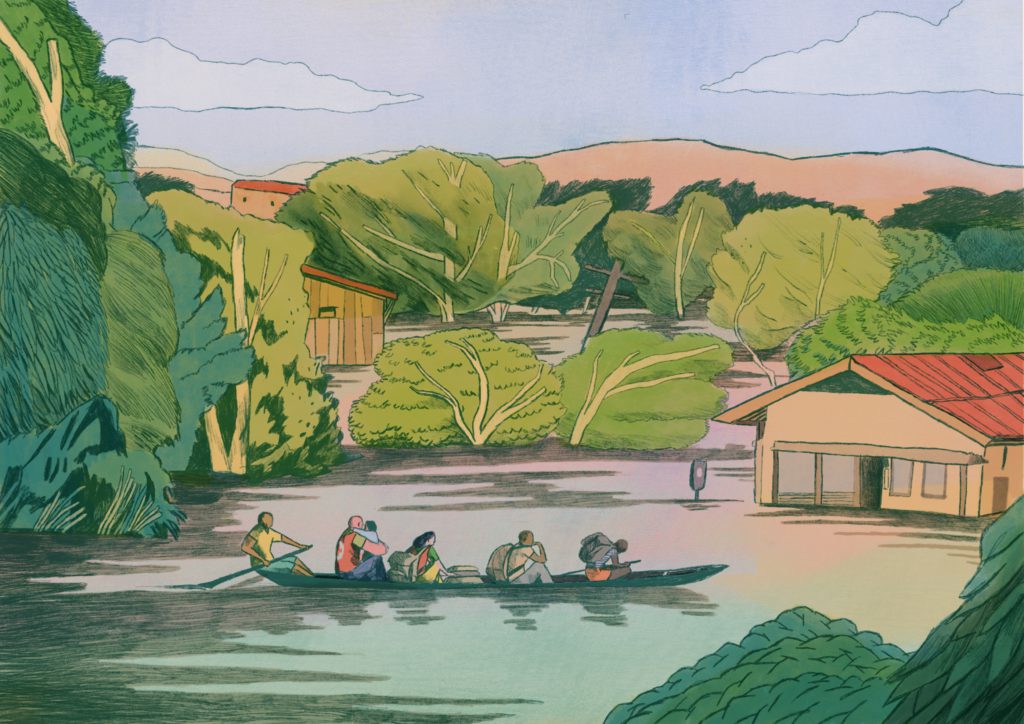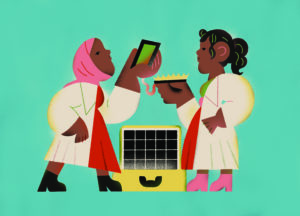
Pau Gasol
Description
The “Living in 2050” project is an innovative initiative by the French Red Cross aimed at raising public awareness about the climate and social challenges society could face by 2050. Through an immersive and interactive exhibition, participants are invited to envision a future where environmental and migratory crises disrupt daily life in France. By embodying a climate migrant, each visitor must make crucial decisions that illustrate the impact of disasters on resources and community life. This project is part of a broader effort to reflect on resilience and anticipation in the face of future crises.
Context
The French Red Cross, like the International Red Cross and Red Crescent Movement, must continuously adapt to societal changes and anticipate future crises in order to remain at the forefront of humanitarian assistance. For several years, it has embraced a strategic foresight approach based on the analysis of long-term trends, whether technological, climatic, or social. This approach accelerated in 2019, with the French Red Cross participating in international foresight studies conducted by the IARAN (Initiative for Humanitarian Aid Anticipation and Research) network.
In 2020, a Strategic Foresight Committee was incorporated into the organization’s statutes to guide the Board of Directors in addressing emerging challenges. That same year, a comprehensive foresight analysis was conducted as part of the French Red Cross’s 2030 strategy. These efforts continued in 2022, notably with an analysis of the potential impact of the war in Ukraine on the organization’s activities. This foresight reflection aims to strengthen the Red Cross’s capacity to act by anticipating future crises and raising awareness among its volunteers, employees, and partners about the challenges of tomorrow. The “Living in 2050” project is fully aligned with this commitment to anticipation and preparation for an uncertain future.
Technical details & Operations
The “Living in 2050” project takes the form of a traveling and immersive exhibition that immerses participants in a fictional yet plausible scenario. They embody a Red Cross volunteer in 2050, set in a France shaped by climatic, health, and social crises. The exhibition begins with a situation: participants must urgently leave their homes and face a crucial decision—choosing a few items to take with them from a provided list. This initial choice, similar to a “choose your own adventure” experience, influences the rest of their journey through the exhibition.
The experience unfolds through a series of nine panels, each representing a stage in this fictional adventure. Participants must make choices throughout their journey, with each decision leading to different consequences, simulating the challenges an uncertain future may present. The choices made by participants affect their ability to adapt to crisis situations, highlighting the complexity of decision-making in the face of climate disasters.
The exhibition is intentionally designed in a “low tech” format, allowing for easy deployment in a variety of spaces, whether within Red Cross facilities, public forums, or dedicated events. The goal is to enable direct interaction between participants and the exhibition content while raising awareness of the urgent nature of the climate issue. This physical and interactive approach, by avoiding a strictly digital format, encourages exchanges between participants and creates deeper engagement.
Deployment & Impact
Since its launch, “Living in 2050” has reached a wide range of participants, both within and outside the French Red Cross. The exhibition has been showcased at internal events such as management conventions (200 participants) and the organization’s General Assembly (300 participants). It has also traveled across France as part of regional events dedicated to volunteers, gathering over 600 people across three different events. The six events specifically organized for volunteers brought together approximately 500 participants, raising awareness among field teams about climate and migration issues.
Outside the Red Cross, the exhibition has garnered interest from external partners. For example, the Paris Fire Brigade (BSPP) participated in sessions involving around ten members, while prestigious academic institutions, such as HEC Paris and the National School of Architecture (ENSA) in Strasbourg, hosted the exhibition to raise awareness among their students. Approximately 240 students have already taken part in the experience, with additional events planned in the coming months.
The impact of this exhibition is not measured solely by the number of participants, but also by the collective awareness it generates. “Living in 2050” encourages participants to reflect on their own resilience in the face of climate crises, while prompting them to take action now. This project is fully aligned with the Red Cross’s mission to prepare society for future challenges while strengthening bonds of solidarity and mutual support.





